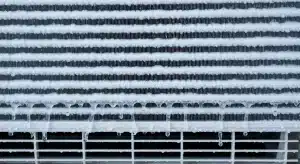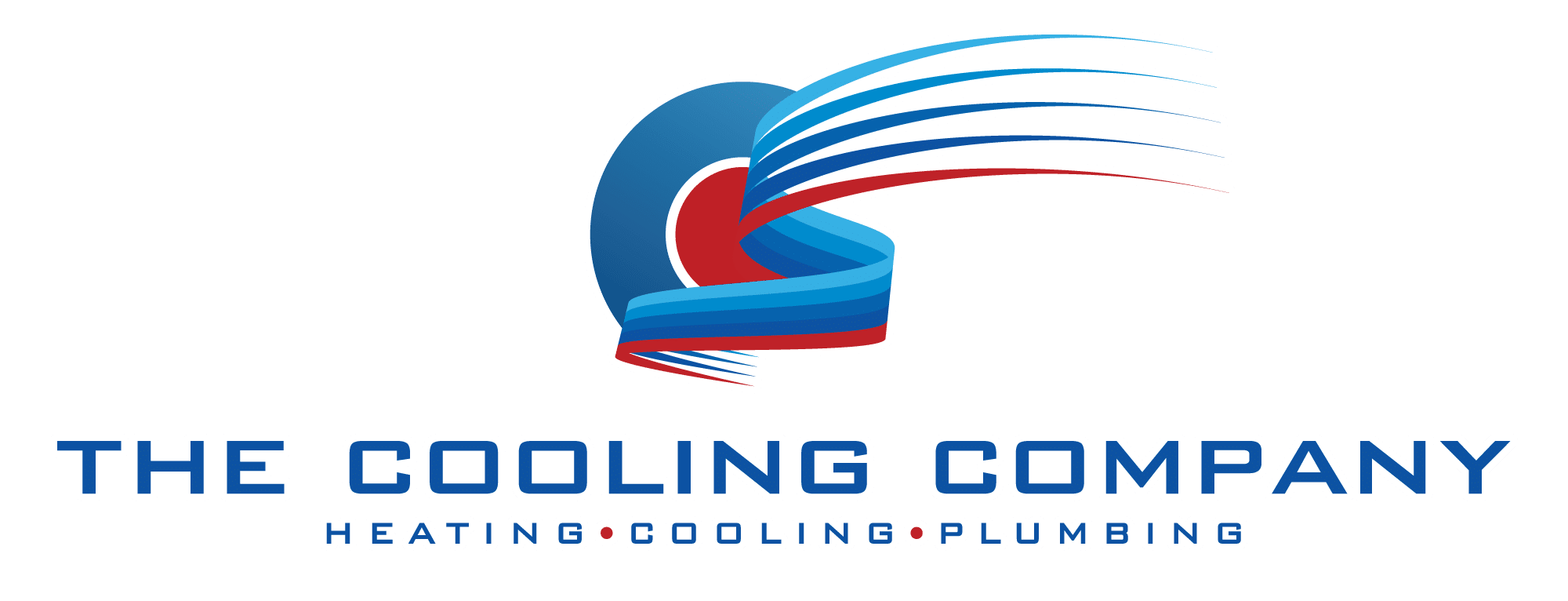
When the sweltering Las Vegas sun beats down, nothing feels more paradoxical than a frozen air conditioner. Ice on the evaporator coil may seem impossible amid triple-digit heat, but it’s a clear sign that your system’s balance has been disrupted. A frozen AC leads to water damage, skyrocketing energy bills, and premature equipment failure. In this comprehensive guide, you’ll learn every root cause—from blocked vents to refrigerant leaks—detailed thawing steps, deep DIY inspections, and long-term strategies to keep the chill where it belongs: in your living space, not on your coils.
If you’d like an all-in-one diagnostic playbook before diving into specifics, start with our AC Troubleshooting: The Ultimate Homeowner’s Guide.
How Evaporator Coil Freezing Happens
Your central air relies on the refrigeration cycle: warm indoor air passes over cold evaporator coils, transferring heat into refrigerant. When coils dip below 32 °F—due to excessive cooling or lack of warm airflow—moisture in the air freezes on contact. As ice accumulates, airflow drops further, causing more freezing in a self-perpetuating loop.
Understanding this frost-buildup feedback loop is key to both thawing your system safely and preventing future ice—so let’s uncover the common culprits.
Key Factors Leading to Freezing
Dirty or Clogged Air Filters
Why it matters: A filthy filter chokes airflow, starving the coil of warm air that prevents freezing. Low airflow causes the coil surface to grow colder than intended, triggering ice formation.
- Symptoms: Reduced cooling capacity, uneven room temperatures, dust buildup.
- Fix: Replace 1″ fiberglass filters every 30 days. For longer life and better filtration, upgrade to 4″ media or MERV-13 pleated filters every 90 days.
- Pro Tip: Install a pressure-drop gauge across the filter compartment and swap filters when pressure exceeds 0.3 in. w.c.
For deeper airflow diagnostics and filter guidance, see AC Not Blowing Hard? Discover Causes Behind Low Airflow. And learn about proper filter MERV ratings in What Is a MERV Rating? which explains how different MERV values correspond to particle-size removal and system performance.
Closed or Blocked Vents & Dampers
Why it matters: Furniture, rugs, or manually closed dampers prevent warm return air from reaching the coil. Restricted return air mimics low airflow, allowing ice to form.
- Symptoms: Consistently weak airflow in certain rooms, even after filter change.
- Fix: Ensure all supply registers and return grilles are fully open. Check manual damper levers in the plenum and set to the “open” position.
- Zone Systems: For motorized dampers, test each zone control at the thermostat to confirm dampers move freely.
Malfunctioning Blower Motor or Fan
Why it matters: A weak, seized, or poorly wired blower fan cannot push sufficient air over the coil. Inadequate airflow means coil temperatures drop below freezing.
- Symptoms: Humming without rotation, squealing, or intermittent airflow.
- Fix: Remove the blower assembly access panel, manually spin the wheel to check for smooth operation, and clean dust buildup. Test the start/run capacitor and replace if out of tolerance. If the motor draws excessive amps or still stalls, replace it.
For a full motor-failure checklist, see 5 Signs That Indicate Your AC Fan Motor Is Bad.
Low Refrigerant Levels & Leaks
Why it matters: Refrigerant pressure affects coil temperature. Leaks cause pressure drop, making coils colder than the designed setpoint.
- Symptoms: Ice on refrigerant lines, hissing sounds, oily residue at joints, reduced cooling despite proper airflow.
- Fix: Only an EPA-certified technician can safely locate, repair leaks, and recharge system to precise specifications.
If you notice both hot air at the vents and frost on the coil, try our AC Blowing Hot Air? Fix It Fast troubleshooting guide for leak indicators.
For refrigerant-handling certification information, visit the EPA Section 608 Certification page.
Dirty or Corroded Evaporator Coils
Why it matters: Grime, dust, and mold on coil surfaces insulate them, preventing efficient heat transfer. When the coil surface cools rapidly, moisture freezes on the dirty surface.
- Symptoms: Frost in random spots, unpleasant odors, reduced cooling capacity.
- Fix: Use a no-rinse, foaming coil cleaner to dissolve and rinse away contaminants. For heavy buildup, schedule a professional coil clean.
Thermostat Glitches & Continuous Run
Why it matters: A faulty thermostat reading or wiring fault can keep the system running non-stop, giving ice time to accumulate.
- Symptoms: System never cycles off, or displays erratic temperatures.
- Fix: Compare thermostat reading to a reliable room thermometer. Recalibrate or replace the thermostat if readings differ by more than ±2 °F. Ensure C-wire connections are secure on smart stats.
Cool Outdoor Temperatures
Why it matters: Running your AC when outdoor temps fall below 60 °F—common in mornings or evenings—can overcool coils and trigger ice.
- Fix: Switch to “Fan Only” mode on mild days. If your unit supports “Economizer” or “Free Cooling,” engage those settings instead of full AC.
Early Warning Signs of Ice Formation
Catching problems before full freeze saves time and money. Watch for:
- Reduced Cooling Output: Air feels lukewarm or damp.
- Weak or Inconsistent Airflow: Even with fresh filters and open vents.
- Visible Frost or Ice: White buildup on coils, lines, or drain pan.
- Water Leaks: Puddles or drips around the indoor unit.
- Continuous Run Time: Unit never cycles off.
- High Indoor Humidity: Moisture lingers despite AC running.
Step-by-Step Thawing Procedure
Follow these safe steps to thaw your system without causing damage:
- Turn Off Cooling Mode: Set thermostat to “Off” but switch fan to “On” to circulate room air.
- Cut Power at the Breaker: Prevent the compressor from running against ice, which can strain mechanical parts.
- Position Towels or Drain Pan: Capture melt-water and protect flooring.
- Allow 2–4 Hours for Natural Thaw: Patience is essential; do not chip ice or use high-pressure spray on coils.
- Run Fan-Only Cycle: After most ice melts, switch back to “Fan Only” for 1 hour to dry residual moisture.
- Inspect & Replace Filter: Use a fresh high-quality air filter before restarting cooling.
- Resume Cooling Mode: Set thermostat back to “Cool,” monitor airflow and return to normal operation.
Deep DIY Inspections to Prevent Refreezing
Beyond basic thawing, conduct these detailed checks:
Filter Replacement & Upgrades
- Set calendar reminders for filter changes—monthly for 1″ filters; quarterly for 4″ media/MERV-13.
- Consider filter pre-filters near the return to trap large debris and extend main filter life.
No-Rinse Coil Cleaning
- Use a foaming, no-rinse coil cleaner sprayed directly on coils; allow foam to dissolve dirt.
- If mold is present, use an EPA-registered sanitizing cleaner or call a professional.
Blower Motor Spin & Capacitor Test
- With power off, manually spin the blower wheel; it should rotate freely.
- Use a multimeter capacitance setting to test start/run capacitor—replace if ±6 % off nameplate value.
Refrigerant Leak Detection
- Inspect copper lines and fittings for oily residue or frost patterns—common leak indicators.
- Consider renting an electronic leak-detector probe for DIY detection.
Thermostat Calibration
- Place a reliable digital thermometer near the thermostat; compare readings.
- Recalibrate via the stat’s menu or replace if out of tolerance.
Outdoor Unit Maintenance
- Keep condenser clear of leaves, debris, and landscaping to ensure proper heat rejection.
- Gently rinse fins with low-pressure water and straighten bent fins with a fin comb.
For general maintenance tips, see ENERGY STAR® AC Maintenance Tips.
When to Call an HVAC Professional
Some issues require licensed expertise. Schedule professional service if you encounter:
- Persistent freezing despite proper airflow
- Confirmed refrigerant leaks or abnormal pressures
- Blower motor hums or trips breakers under load
- Coils remain grimy or moldy after cleaning attempts
- Complex duct modifications or inaccessible components
Only EPA-certified technicians may legally handle refrigerants. Verify credentials at the EPA Section 608 Certification page.
Advanced Tips & Long-Term Protection
- Smart Thermostats: Install Wi-Fi or programmable stats with runtime alerts for abnormal cycles.
- Bi-annual Tune-Ups: Include refrigerant charge check, electrical tightening, lubrication, and airflow balancing.
- UV-C Coil Sterilization: Mount UV lamps in the air handler to inhibit mold on coils.
- Condensate-Line Maintenance: Flush lines quarterly with vinegar or enzyme cleaner to prevent clogs.
- Attic Heat Mitigation: Use radiant-barrier foil or attic fans to keep temperatures below 140 °F, prolonging component life.
- Rebate & Financing: Many utilities offer rebates on ECM upgrades and duct sealing. NV Energy and contractors often provide 0 % financing.
For deep technical reference on refrigeration and air-conditioning systems, see NIST’s HVAC Functional Inspection and Testing Guide (NISTIR 4758).
Preventative Maintenance Checklist
- Change filters quarterly and inspect coils
- Schedule bi-annual professional service
- Test static pressure and seal ducts annually
- Calibrate thermostat and exercise dampers each season
- Record key metrics—static pressure, amp draw, run-times—for trend analysis
Next Steps
A frozen AC coil in triple-digit heat signals multiple system imbalances. By understanding root causes, following careful thawing steps, performing deep DIY inspections, and engaging expert AC repair in Las Vegas when necessary, you can break the ice cycle for good. Proactive maintenance and smart upgrades—like high-MERV filters, UV-C lights, and programmable thermostats—ensure your system stays reliably cool, efficient, and long-lived. For transparent, no-surprise service and 24/7 emergency support, visit our AC Repair Services page today.



